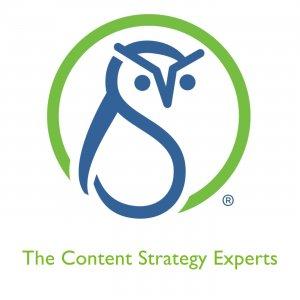The Content Strategy Experts - Scriptorium

Moving to structured content: Expectations vs. reality (podcast)
In episode 76 of The Content Strategy Experts podcast, Elizabeth Patterson and Alan Pringle talk about expectations versus realities of tools when moving to smart structured content.
“You can have different people using different tools and still pour all of the content into the single content management system. People connect to it differently based on the authoring tool that they prefer, and what works best for them.”
—Alan Pringle
Related links:
* ROI for content strategy: Getting around roadblocks
* XML business case calculator
* Structured authoring and XML
Twitter handles:
* @PattersonScript
* @alanpringle
Transcript:
EP: Welcome to The Content Strategy Experts Podcast brought to you by Scriptorium. Since 1997, Scriptorium has helped companies manage, structure, organize, and distribute content in an efficient way.
EP: In this episode, we talk about expectations versus realities of tools when moving to smart structured content. Hi, I’m Elizabeth Patterson.
AP: And I’m Alan Pringle.
EP: And I want to get things started by just having a brief definition of what structured content is.
AP: Smarter structured content is a content workflow that lets you define and enforce a very specific, consistent organization of your content. And it also captures some intelligence about your content. For example, what the audience is, for what product it is, you can embed that intelligence inside the structure for that content.
EP: Okay, great. So when you decide to make that move to smart structured content, what are some questions that you need to ask yourself before you make that move?
AP: Once you’ve established that business case that you do need to move to structure content, one thing you can start to do is really take a look at what you’re doing right now with your tools. I’m going to make the assumption that you were working in some kind of unstructured tool, some kind of desktop publishing tool, word processing tool. There are lots of them out there, Microsoft Word, InDesign, FrameMaker, any of those kinds of tools that are more on the traditional desktop publishing design side. And take a look at what you’re doing with those tools right now, are you using a template? Are you doing things or your people in your department doing things, shall we say in a Wild West way? Where anything goes. Because having a template is kind of like a baby step towards structure, because you have very specific tagging that your content creators assign and it gives an implied structure to your documents.
AP: So there’s that mindset already there, yes. There are certain tags that I need to use and it’s best that if I use them in a certain order. And that kind of mindset would be very helpful when you move into structure where there is an actual enforcement under the covers by the software, to be sure you are following that particular organization of content.
EP: And then also, you should probably take a look at the profiles of the people who create and review that content because that’s going to look different across the board.
AP: Yes, it will. You have different kinds of content contributors in an organization. And for example, you may have people professionally, that’s all they do, is write content. Now that could be marketing content, that could be training content, that could be product content, support content.






 Visit Podcast Website
Visit Podcast Website RSS Podcast Feed
RSS Podcast Feed Subscribe
Subscribe
 Add to MyCast
Add to MyCast